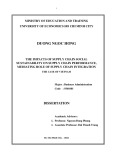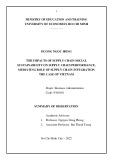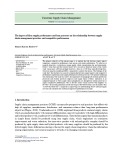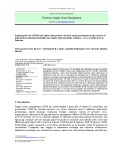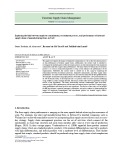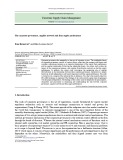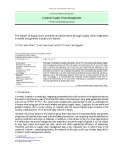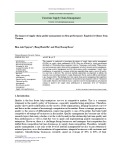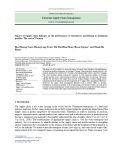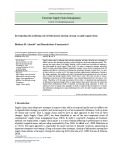
* Corresponding author
E-mail address:erna_hernawati@yahoo.com (E. Hernawati)
© 2019 by the authors; licensee Growing Science, Canada
doi: 10.5267/j.uscm.2018.11.003
Uncertain Supply Chain Management 7 (2019) 529–540
Contents lists available at GrowingScience
Uncertain Supply Chain Management
homepage: www.GrowingScience.com/uscm
The corporate governance, supplier network and firm supply performance
Erna Hernawatia* and Rika Lusiana Suryab
aLecturer of Universitas Pembangunan Nasional Veteran Jakarta, Indonesia
bLecturer of College of Islamic Economics and Business, (STEBI ) Lampung University, Pesawaran, Indonesia
C H R O N I C L E A B S T R A C T
Article history:
Received September 25, 2018
Accepted November 9 2018
Available online
November 9 2018
Corporate governance has emerged as a sine-qua of corporate success. The stakeholder theory
of corporate governance consists of various factors, other than the economy and finance and
considers corporate governance as an important determinant of the supply chain performance
and the supplier relationship. Following the stakeholder theory, the current study studies the
impact of the corporate governance, and supplier diversification network on the firm supply
performance. In addition, the current study investigates the moderating role of supplier
diversification in the relationship between three corporate governance characteristics; namely
board size, board independence, and board competency and firm supply performance. The study
is carried out on a sample of the industrial firm in Indonesia. To achieve the research objectives
PLS-SEM technique is employed. The findings of the study provide a great deal of agreement
with the proposed hypotheses. The findings of the current study are helpful for the policymakers,
researchers and practitioner in examining and understanding the link between corporate
governance, supplier network and firm supply performance.
ensee Growin
g
Science, Canada
by
the authors; lic9© 201
Keywords:
Corporate Governance
Supplier Network
Firm supply performance
Indonesia
1. Introduction
The code of corporate governance is the set of regulations, usually formulated by capital market
regulatory authorities such as security and exchange commission to control and govern the
organizations (Jiang & Zhang, 2018). The recent episode of the subprime crisis has made it realized to
the world that, transparency in corporate management is one of the most important factors of the
smoothly functioning capital market (Allen, 2017; Mudambi & Pedersen, 2007). Corporate governance
comprises of two sub governance mechanisms known as external and internal control mechanisms. The
external governance mechanism of the corporate governance is the external control offered on the firm
through the board of directors. Whereas the internal control mechanism consists of functions such as
internal audit committee, risk market committee and HR committee. Here a question arises: what is
basic purpose of corporate governance? Is it only meant to solve and economic and financial problems
or its scope is beyond them? The answer is yes as the organization has a deliberate structure (Allen,
2017) which means it consists of many departments and the performance of each department is heavily
dependent on the others. Meanwhile, the stakeholders and their aligned interest may vary from















